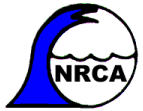|
|
||
|
|
|
|
|
Overview of the environment in Jamaica The environment of Jamaica has been summarized in the past by reference to the country as the land of wood and water. This designation was based on a loose translation of its Amerindian/Taino name - Xaymaca. It is now debatable whether the island can be so characterized today, as significant environmental modification has accompanied the development of the island over the last four centuries. The broad-leaved humid and sub-humid pre Colombian tropical forests have largely disappeared. Less than 6-7 percent of Jamaica's land area is still considered to be in natural forest cover (Kelly, D.L. - The Threatened Flowering Plants Of Jamaica - Biological Conservation 46: 201-216, 1988). This forested area has been cut one or more times in the past, leaving "ruinate" . Deforestation has been reported to be occurring at the rate of more than 3 percent per annum with serious consequences for soil and water conservation as well as biodiversity. This situation has been aggravated by improper hillside farming practices as well inappropriate construction and development practices which lead to a considerable amount of land and watershed degradation. Water in Jamaica is not what it used to be in terms of stream flow and quality and has become a subject of major concern. Pollution of surface, ground and sea water threatens human health and tourism revenues. Water for domestic purposes is frequently in short supply islandwide. Certain hillside farming practices as well as construction and development activities have contributed to watershed degradation. The degradation of watersheds has led to flooding becoming more frequent and more severe, and pollution of ground water is resulting in health risks, increases in cost of infrastructure and reduced agricultural productivity. Topsoil loss in the watershed areas is simultaneously reducing agricultural productivity and increasing siltation of stream channels and damaging offshore reefs. In Jamaica, as with other small island developing states, there is an extremely close relationship between the terrestrial and marine ecosystems. Land degradation in the hills is quickly manifested in impacts on marine resources and particularly in damage to coral reef and related ecosystems. In addition, the varied and mountainous inland terrain supports a number of ecosystems unusually rich in biodiversity. Water is the link that ties the terrestrial ecosystems with marine habitats and lowland urban areas. The human settlements of the lowland urban areas and unplanned hillside communities are another important aspect of Jamaica's environment. The unavailability of land for low-income settlements has led to overcrowded squatter settlements, short of domestic water and sewage facilities and plagued with public health risks and the other social and economic problems of urban settlements. The urban management and settlement issues are not confined to those of the informal sector, but are compounded by poor adherence to physical planning precepts which has led to the juxtaposition of industries and residential areas. Effluent and emission standards have not been adhered to and the Jamaican industrial sector is now in the process of coming into compliance with the requirements of the NRCA. There is a particular concern in relation to the agroprocessing sector which has traditionally disposed of its waste in streams and sinkholes, and whose impacts on the water resources are significant. People are at the centre of the environment in Jamaica. Their sheer pressure on the land (216 per sq.km.) has caused the degradation of watersheds, the pollution of ground and surface water, and urban sprawl and blight. All the people of Jamaica, and all sectors of society must share in the burden of rehabilitating and restoring the Jamaica environment. A national effort between Government, the private sector, community based entities and NGOs is required. There is acceptance among the civil society and private sector in Jamaican of the need for their participation in environmental management. Added to this is the presence of an active and expanding environmental NGO community with a commendable track record and international recognition. Government has shown its commitment to comprehensive environmental management starting with the creation of a Natural Resources Conservation Division (NRCD) after the 1972 Stockholm Conference on the Human Environment and continuing with the enactment of the 1991 law establishing the Natural Resources Conservation Authority (NRCA), the lead environmental management agency in the country. This commitment is currently being demonstrated in the variety of initiatives described in this document, and related activities including the updating of the 1988 Country Environmental Profile (CEP), an important source document for this 1995 JANEAP. It is the intention of the Government to continue its commitment to sustainable development through the implementation and annual revision of the JANEAP.
|
|
|
Web site maintained by: webmaster |
Page Editor: |
This page was last updated: 07.11.2000 |
